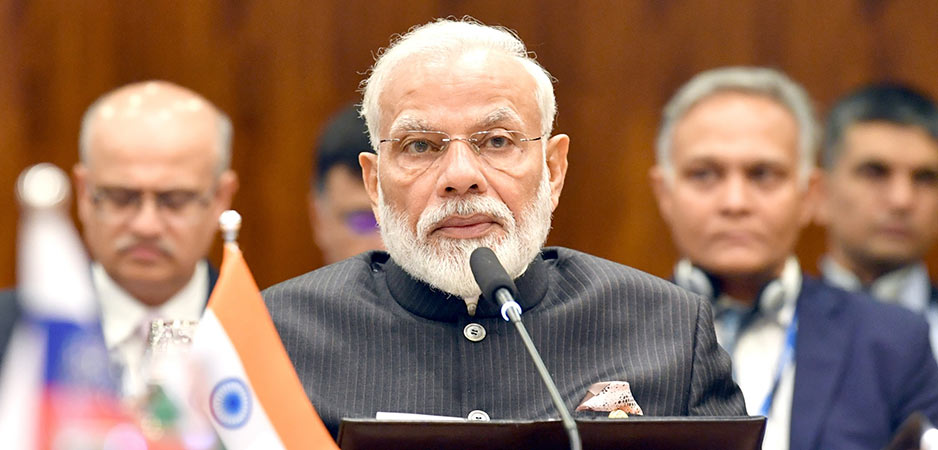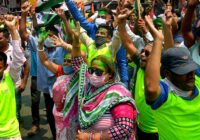Indian culture venerates tools of trade. Indeed, a special day in the festival calendar is dedicated to worshiping them. In this context, tractors and farm implements are considered almost sacred. Burning a tractor is one of the most symbolic forms of protest. Members of the main opposition party decided to engage in precisely this act. They recently burned a tractor in the high-security zone of India Gate in New Delhi.
Why Are the Indian and Chinese Economies Decoupling?
As per the World Bank, 41.5% of Indians are employed in agriculture. Another 20% are dependent on it. This has implications for Indian politics. Support of farmers is critical to winning elections. Agriculture is to India what the military-industrial complex is to the US. Politicians promise goodies and operate elaborate patronage systems in rural India to secure votes.
The chaos, unruliness and terrible state of Indian cities can partly be explained by the disproportionate doling out of subsidies to rural areas. This leaves little money for urban infrastructure, which is almost invariably ramshackle across the country. Most state governments in India are headed by rural politicians. Even Karnataka, which is home to Bengaluru, the information technology capital of the country, is no exception.
The Biggest Reform Since 1991
With such powerful vested interests, hinting at reform is a tall proposition. The Bharatiya Janata Party (BJP) government led by Prime Minister Narendra Modi has done the unthinkable. It has dismantled state control over agricultural markets. Opposition parties are protesting because they represent rural power brokers who are deeply upset. By freeing farmers from such power brokers, the Modi government has ushered in a brave new era both for Indian politics and the economy.
A little bit of context is essential to understand the true implications of this move. Until now, farmers were forced to sell their produce to agricultural produce market committees (APMCs). They are dominated by rural politicians and local bigwigs who exploit farmers. For decades, farmers got pitiably low amounts while consumers paid ridiculously high prices. The middlemen who run APMCs pocketed the difference.
At a time when GDP has been shrinking and COVID-19 has been barely tackled, the Modi-led government has introduced the most significant economic reforms since 1991. In that historic year when the US fought Iraq in the Gulf War and the Soviet Union fell, India liberalized its economy and ushered in an era of high growth. The liberalization of agricultural markets will boost farm incomes significantly. With about 60% of India’s population reliant on agriculture and allied activities, this move will increase domestic demand and bolster Modi’s political base. In addition to this, Modi is also pioneering a scheme inspired by Peruvian economist Hernando De Soto’s work that seeks to better define the property rights of the farmers.
Other Major Measures
Apart from agricultural liberalization, the Modi government has instituted other far-reaching reforms. It has simplified longstanding labor laws that held back manufacturing. The Modi government has also curbed the flow of foreign funding into India’s nonprofits. Many of them have been opponents of the Modi government and its policies. Now, these nonprofits stand weakened, leaving the BJP in a stronger position.
Another development has strengthened the BJP. For decades, Bollywood has been a bastion for opponents of the ruling party. Recently, the film industry has been in trouble. The death of a small-town actor has put the spotlight on nepotism and corruption in Bollywood. Some key figures are now under investigation. As a result, Bollywood’s criticism of the BJP has become muted in some quarters but more strident in others. Bollywood’s target is a section of the media that it deems to be sympathetic to the BJP’s brand of politics.
Such is the BJP’s domination that its ambitious legislative agenda has escaped public scrutiny and effective opposition. In June, these authors sent out a brief that explained how the ruling party needed just seven more members of parliament to control the 245-member Rajya Sabha, the upper house of the parliament. Now, the BJP has achieved that control and its MPs are ramming through reforms their party deems fit.
Foreign correspondents working for big media outlets in New Delhi who frequent the Khan Market have failed to understand the major implications of recent moves. The Modi-led government has embarked on a new chapter. The legislative reforms it is pushing through are ambitious, far-reaching and potentially transformative. While COVID-19 is ravaging the country and China is making threatening moves on its border, India has bet boldly on big reforms. The BJP might reap a rich political harvest as a result.
Yet even as it seems all smooth sailing for the BJP, the ruling party faces a big risk. Voters expect it to govern well. So far, several key reforms and policy initiatives have failed miserably. India’s colonial-era bureaucracy has built toilets and opened bank accounts because these did not threaten its power. In contrast, measures that threatened bureaucratic privilege, such as manufacturing reforms or indirect tax reforms, have been quietly scuttled.
If India’s powerful bureaucracy tries similar tricks with the latest set of reforms, the ambitious Modi government might finally turn on the purveyors of red tape themselves.
The views expressed in this article are the author’s own and do not necessarily reflect Fair Observer’s editorial policy.
Support Fair Observer
We rely on your support for our independence, diversity and quality.
For more than 10 years, Fair Observer has been free, fair and independent. No billionaire owns us, no advertisers control us. We are a reader-supported nonprofit. Unlike many other publications, we keep our content free for readers regardless of where they live or whether they can afford to pay. We have no paywalls and no ads.
In the post-truth era of fake news, echo chambers and filter bubbles, we publish a plurality of perspectives from around the world. Anyone can publish with us, but everyone goes through a rigorous editorial process. So, you get fact-checked, well-reasoned content instead of noise.
We publish 2,500+ voices from 90+ countries. We also conduct education and training programs
on subjects ranging from digital media and journalism to writing and critical thinking. This
doesn’t come cheap. Servers, editors, trainers and web developers cost
money.
Please consider supporting us on a regular basis as a recurring donor or a
sustaining member.
Will you support FO’s journalism?
We rely on your support for our independence, diversity and quality.






